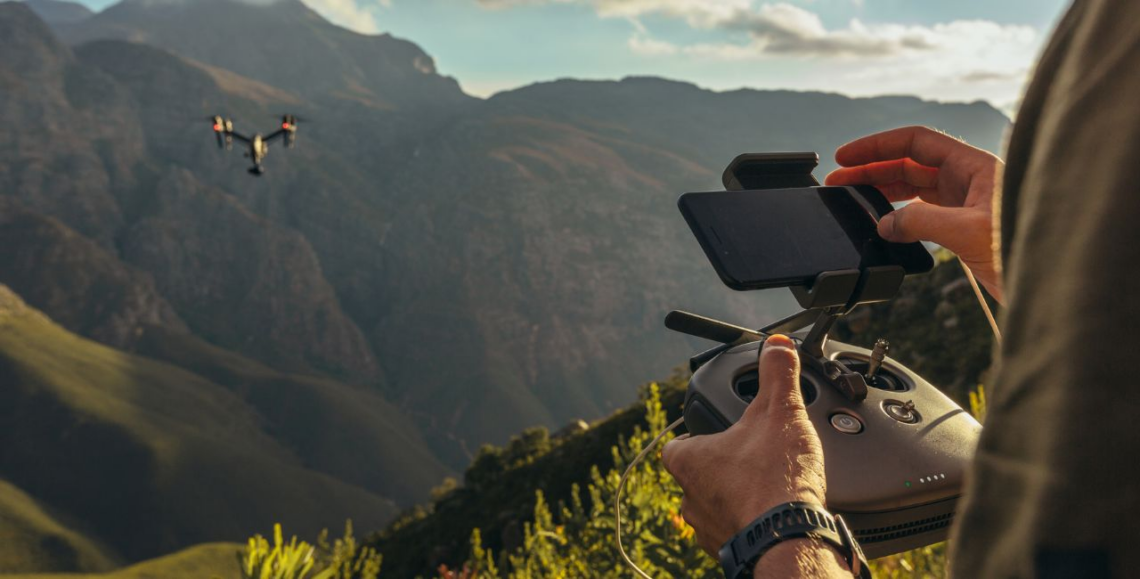Download our BVLOS OCTA Exam Prep Information Flyer Here.
As the use of drones expands across various industries, the need for advanced drone operations has become increasingly critical. One such advancement is Beyond Visual Line of Sight (BVLOS) flying, which enables drone pilots to operate their UAVs beyond their direct visual observation. This capability opens new horizons for industries such as agriculture, infrastructure, and emergency services. In this blog post, we will explore the significance of BVLOS training, delve into the differences between BVLOS and EVLOS (Extended Visual Line of Sight), and provide insights into what the BVLOS OCTA Exam entails.
We’ll also cover who needs BVLOS training, including case studies relevant to the agriculture industry and drone flying in Australia.
What is BVLOS?
BVLOS stands for Beyond Visual Line of Sight, a regulatory status that allows drone pilots to operate their UAVs beyond their direct visual range. Unlike standard drone operations, which require pilots to maintain visual contact with their drones at all times, BVLOS enables pilots to control drones from greater distances and through complex environments.
Why BVLOS Training is Essential
BVLOS training is crucial for several reasons:
Who Needs BVLOS Training?
BVLOS vs. EVLOS: Understanding the Difference
What the BVLOS OCTA Exam Entails
The BVLOS OCTA (Operational Certification for BVLOS) Exam is a comprehensive assessment designed to evaluate a pilot’s capability to operate drones safely and effectively beyond visual line of sight. This exam includes:
Theoretical Knowledge: Understanding of aviation regulations, airspace management, meteorology, and risk assessment.
Practical Skills: Demonstration of operational proficiency in BVLOS conditions, including flight planning, emergency procedures, and use of onboard systems.
Safety Protocols: Knowledge of safety protocols and risk management strategies specific to BVLOS operations.
For more information download our BVLOS OCTA Exam Prep Information Flyer Here.
BVLOS Operations in Australia | Case Studies
Australia’s agricultural sector, infrastructure projects, and environmental monitoring initiatives benefit significantly from BVLOS capabilities.
Agricultural Revolution in Queensland: A Queensland-based agriculture company recently utilized BVLOS drones to monitor large cattle farms. The drones provided real-time data on livestock health and pasture conditions, allowing for timely interventions and improved farm management.
Infrastructure Inspections: In a major infrastructure project, BVLOS drones were employed to inspect a sprawling network of power lines and transmission towers across the nation. The drones collected detailed imagery and data, enabling efficient maintenance planning and reducing the need for manual inspections.
Disaster Response: During a recent natural disaster in NSW, BVLOS drones played a critical role in assessing damage and coordinating emergency response efforts. The drones provided aerial views of affected areas, helping responders prioritize their efforts and allocate resources effectively.
Conclusion
BVLOS drone training represents a significant advancement in the field of unmanned aerial systems, offering expanded operational capabilities and new opportunities across various industries.
Whether you’re a professional drone pilot, a service provider, or an individual involved in sectors like agriculture or emergency services, BVLOS training is essential for maximizing the potential of drone technology. By understanding the differences between BVLOS and EVLOS, preparing for the BVLOS OCTA Exam, and exploring real-world case studies, you can better appreciate the impact and benefits of BVLOS operations.


